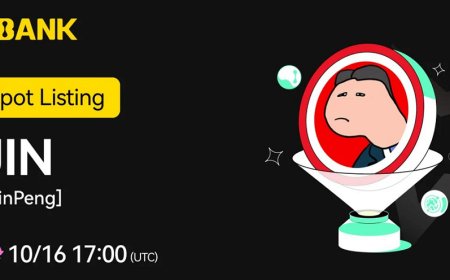Solana Coin: Market, Price, Chart, Future & How it Work Fastest Growing Blockchain
Solana is one of the most promising blockchain platforms in the constantly changing cryptocurrency space. It is renowned for its rapid throughput, cheap transaction fees, and creative approach to decentralized applications (dApps). Because it powers the Solana network, its native cryptocurrency, SOL, has become well-known and has risen to the top of the list of digital assets.

Solana: An Extensive Look at the World's Quickest-Growing Blockchain and Its Original Coin SOL
Solana is one of the most promising blockchain platforms in the constantly changing cryptocurrency space. It is renowned for its rapid throughput, cheap transaction fees, and creative approach to decentralized applications (dApps). Because it powers the Solana network, its native cryptocurrency, SOL, has become well-known and has risen to the top of the list of digital assets. Because of its consensus method, solid ecology, and architecture, Solana is now a formidable rival to other smart contract platforms like Ethereum.
What is Solana?
High-performance, open-source blockchain technology called Solana is intended to enable cryptocurrency and decentralized apps. Solana, which was developed by Anatoly Yakovenko in 2017 and formally introduced in 2020, was designed to solve some of the major issues that current blockchain networks are confronting, including scalability problems, expensive fees, and poor transaction rates.
Solana stands out due to its high transaction processing speed (TPS), which frequently surpasses 50,000 TPS. This is a substantial improvement over networks like as Ethereum (15-30 TPS) and Bitcoin (7 TPS). This is made possible by a number of cutting-edge technologies, chief among them its Proof of History (PoH) consensus process, which permits the network to sequence transactions quickly without jeopardizing decentralization or security.
The Role of SOL
The Solana network's native coin, SOL, performs a number of vital functions for the ecosystem.
- Transaction costs: On the Solana network, SOL is used to cover transaction costs and the execution of smart contracts. Because Solana prioritizes speed and scalability above other blockchains, its costs are usually substantially lower, which attracts both developers and consumers.
- Staking and Network Security: To safeguard its network, Solana employs a Proof of Stake (PoS) technique. SOL holders have the option to stake their coins in order to support network security and transaction validation. Staker incentives come in the form of extra SOL in exchange.
- Governance: Although Solana's governance structure is currently being developed, it is anticipated that SOL holders will eventually be able to cast votes on proposals that impact the growth and future of the network, allowing them to have a say in how the platform is run.
- Development of the Ecosystem: SOL is also involved in providing incentives for developers and other ecosystem members. The Solana blockchain promotes the development of new projects and decentralized apps (dApps) through a number of initiatives, including grants and awards.
Solana’s Core Technology (Ecosystem)
Solana stands out from other blockchain platforms thanks to a number of significant technology advancements that mostly fuel its exceptional speed and scalability.
- Historical Proof (PoH)
One of the most distinctive aspects of Solana's architecture is definitely Proof of History (PoH). In contrast to conventional blockchains, which exclusively depend on Proof of Work (PoW) or Proof of Stake (PoS) for transaction validation, Proof of Hashing (PoH) functions as a cryptographic timestamp, sequentializing transactions prior to their processing by the network. - Gulf Stream: Because of Solana's use of the novel mempool-less Gulf Stream transaction forwarding protocol, validators can begin processing transactions even before they are part of a block. As a result, the network can process many transactions in parallel and confirmation times are greatly shortened.
- Sealevel: Solana's parallel smart contract runtime, called Sealevel, enables the simultaneous execution of many smart contracts. Sealevel allows thousands of smart contracts to run in simultaneously without interfering with one another, optimizing resource efficiency and performance, in contrast to Ethereum, where smart contracts execute in a single, sequential chain.
Solana vs. Ethereum
Ethereum is the most widely used platform for decentralized apps and smart contracts, and Solana is frequently compared to it. Although a scalable, secure, and decentralized architecture is the goal of both platforms, there are a number of significant differences between them:
- Transaction Speed and Cost: Solana has a huge edge over Ethereum in terms of transaction speed and cost. In comparison to Ethereum, which can only process between 15 and 30 TPS, Solana can process over 50,000 TPS, making it a more desirable choice for high-frequency applications like non-fungible tokens (NFTs) and decentralized finance (DeFi). Developers and users dissatisfied with Ethereum's high gas expenses are drawn to Solana because of its significantly reduced transaction fees.
- Consensus Mechanism: Solana's Proof of Stake in conjunction with Proof of History is a cutting-edge strategy that enables the network to grow effectively. On the other side, Ethereum 2.0 is presently moving the platform from Proof of Work (PoW) to Proof of Stake (PoS). Solana's architecture was created with scalability in mind from the beginning, in contrast to Ethereum 2.0, which claims to address scalability concerns.
- Developer Ecosystem: A lot of dApps have been developed on Ethereum's platform, and the ecosystem is well-established. But because of its scalability, speed, and cheaper prices, Solana is becoming the platform of choice for many high-profile projects and DeFi protocols, and as a result, its ecosystem is expanding quickly.
The Growth of the Solana Ecosystem
Developers, investors, and users have all been drawn to Solana's quickly expanding ecosystem since its introduction. On Solana, a number of noteworthy decentralized platforms and applications have been developed, including NFT markets, DeFi protocols, and decentralized exchanges (DEXs).
Decentralized Finance (DeFi): Because of its great throughput and inexpensive transaction fees, Solana has become a well-liked platform for DeFi applications. Within the Solana ecosystem, initiatives like the automated market maker Raydium and the decentralized exchange Serum have acquired a lot of interest.
NFT Marketplaces: Solana has grown in popularity as a platform for non-fungible tokens (NFTs), with exchanges like Magic Eden and Solanart providing quick and reasonably priced digital art and collectibles minting and trading. In comparison to Ethereum-based platforms, Solana's cheap fees make it a more accessible platform for NFT developers and consumers.
Web3 and dApps: Solana is promoting itself as a platform for decentralized applications of the next generation. It is appropriate for a variety of use cases, including gaming, entertainment, banking, and real estate, because to its scalability and affordability.
The Future of Solana
In terms of the future, Solana could be quite important for decentralized applications and banking. Solana is in a good position to draw developers and customers looking for an alternative that provides high throughput, cheap fees, and scalability while Ethereum continues its transition to Ethereum 2.0.
The Solana ecosystem's ability to draw in new projects while preserving network security, decentralization, and stability will determine how successful it is in the long run. Solana's native token, SOL, has the potential to grow into one of the most significant assets in the cryptocurrency market if it successfully resolves these issues.
Solana Price Prediction 2025
Based on the examination of Solana's past year pricing, it is projected that the lowest price of Solana will be approximately $142.16 in 2025. The highest anticipated SOL cost could be $206.12. In 2025, the average trade price might be $270.08.
| Month | Minimum Price | Average Price | Maximum Price |
|---|---|---|---|
| January 2025 | $137.13 | $177.71 | $157.42 |
| February 2025 | $137.59 | $186.11 | $161.85 |
| March 2025 | $138.04 | $194.50 | $166.27 |
| April 2025 | $138.50 | $202.90 | $170.70 |
| May 2025 | $138.96 | $211.30 | $175.13 |
| June 2025 | $139.42 | $219.70 | $179.56 |
| July 2025 | $139.87 | $228.09 | $183.98 |
| August 2025 | $140.33 | $236.49 | $188.41 |
| September 2025 | $140.79 | $244.89 | $192.84 |
| October 2025 | $141.25 | $253.29 | $197.27 |
| November 2025 | $141.70 | $261.68 | $201.69 |
| December 2025 | $142.16 | $270.08 | $206.12 |
Conclusion:
Because of Solana's cutting-edge technology, excellent performance, and expanding ecosystem, the cryptocurrency industry has seen a rapid growth in the use of SOL, the native coin. Solana is well-positioned to play a significant role in the development of blockchain technology and decentralized finance because of its distinctive consensus method, scalable architecture, and decentralized philosophy. It will be interesting to watch how the platform competes with Ethereum and other blockchains in the years to come as it continues to grow and change.



























